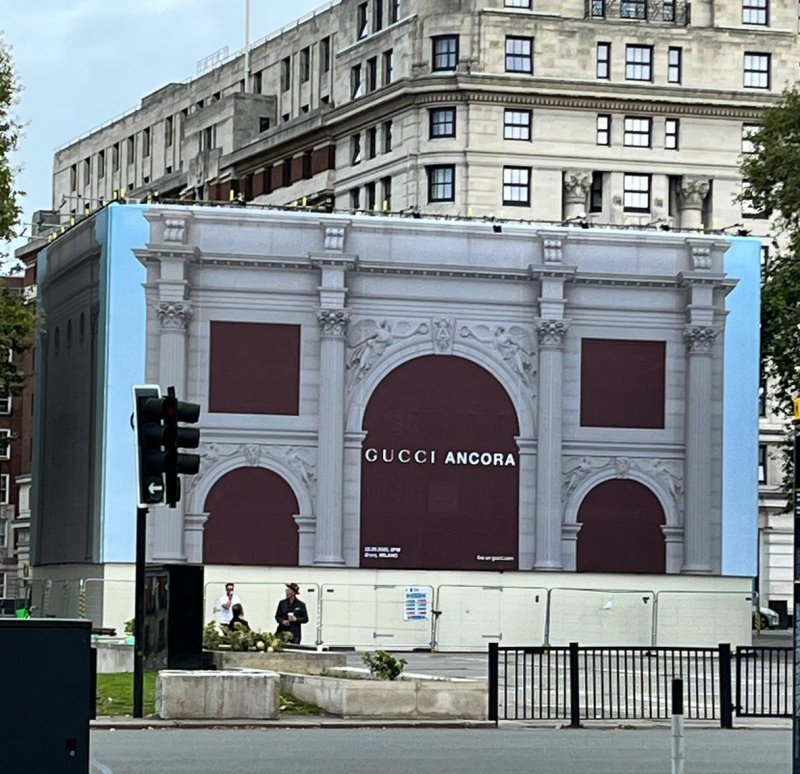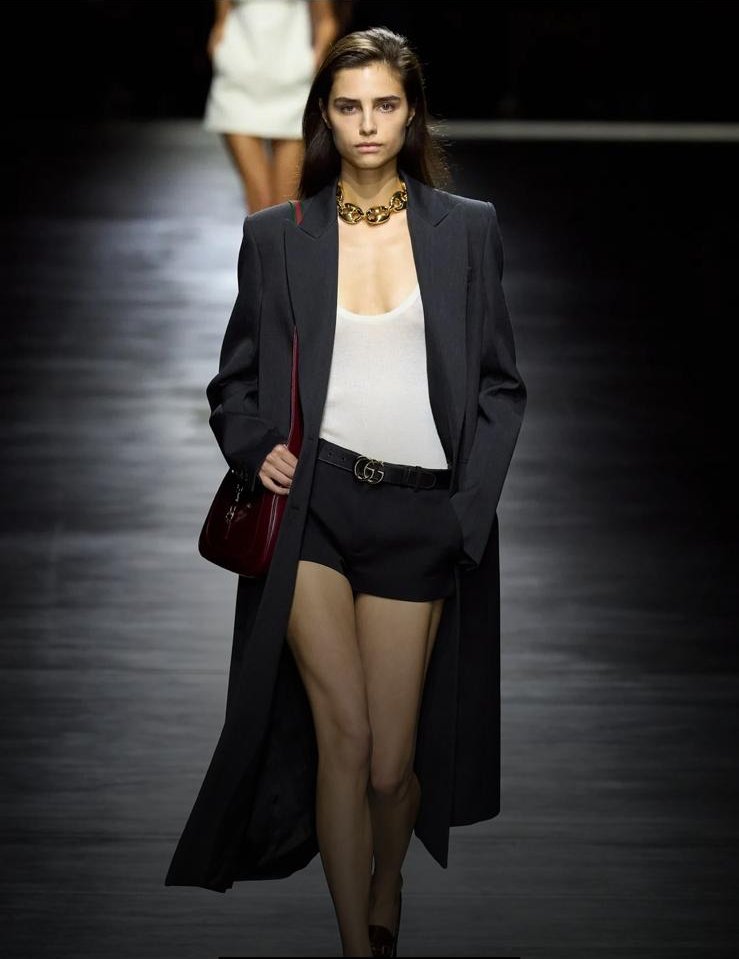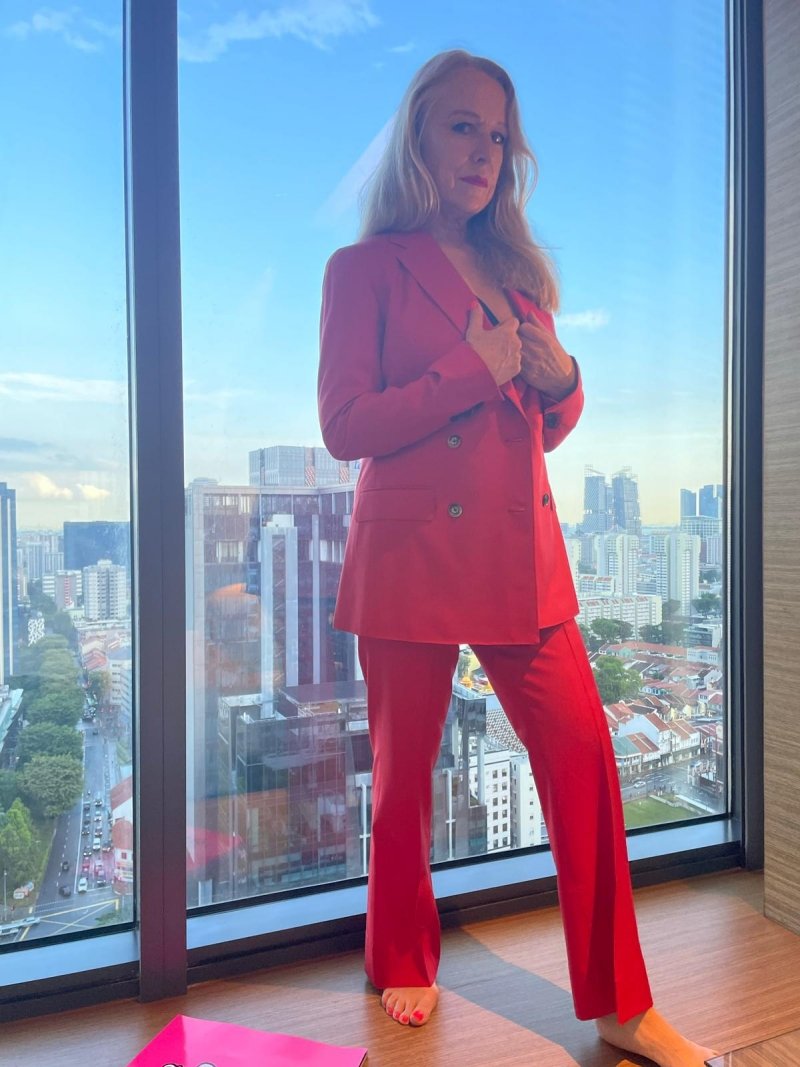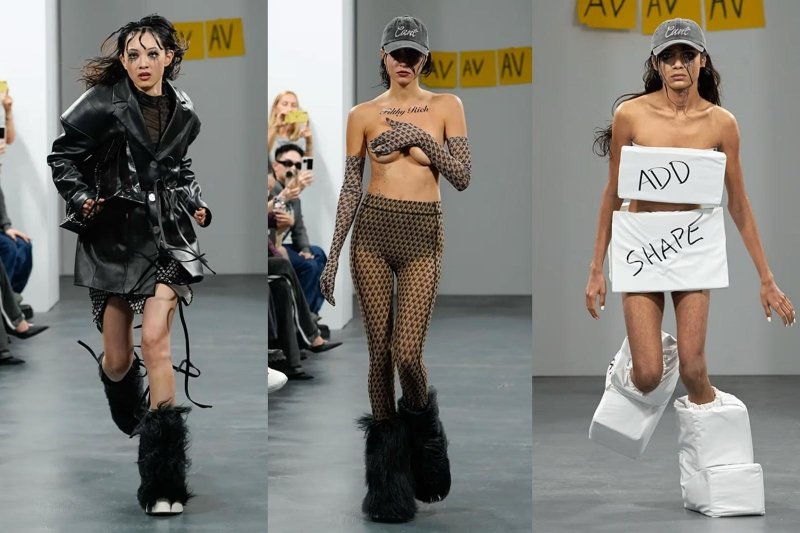One of the most anticipated shows took place last Friday. The debut of Gucci’s new Designer Sabato de Sarno. I did not know what to expect, as I was sad to see the departure of the maximalist darling - Alessandro Michele. There have been several shows since he left, and not much indication of what the new era would epitomise. We have seen “GUCCI ANCORA” without much idea of what that intended, and there have been some very classic looks in their newsletters.
GUCCI ANCORA
Friday was the day, and it really was a new look. Or was it? The opinions of friends were underwhelming - “Nothing much, really”, and “Was that it?”. I LOVED IT - so fresh and simple, a sigh of relief. Some said it was like the “Tom Ford Era”. But not really, much more ‘90s Prada minimalism. Simple silhouettes, primarily solid colours, the absence of print and over-decoration, and a youthful feeling.
Why is this so appealing? It felt like a palate cleanser from all the Fashion statements and confusion. It also felt very familiar and somewhat harking back to happier, freer times. In the ‘90s and early ‘00s, we did not have so many ongoing global crises - climate crisis, extreme weather, war, mass migration, the recent pandemic, not to mention a huge mental health crisis (so many crises in one sentence).
We all know fashion is cyclical; it always comes around again. I should have guessed it, really. I have an uncanny way of feeling what is next for fashion. I love clothes and expressing myself through what I wear, and recently, I have been wearing my old Prada, Tom Ford Gucci and have upcycled much of my remaining ‘00s pieces. In addition, I had two trouser suits tailored in the past two years with waistcoats and options for minis and shorts (all based on a 2000 Ford-era Gucci suit). Seeing this kind of look on the Gucci catwalk was a fabulous surprise. Somehow, fashion is making sense again. Through this show and its minimal aesthetic, we can incorporate all our learnings from sustainability (thrifting, vintage, secondhand, etc.), restyle what we already have and then focus on our own well-being and sense of a new future.
Gucci and Kering have been struggling with sales and profits for the past few Seasons (hence the departure of the formerly beloved Michele). Francoise Henri Pinault has been making a number of acquisitions to craft a new future for the group. If we look across the competitor brands - YSL, Chanel, and Celine - they have a clear customer and aesthetic. They are less drama-driven and more a continuation of a mood. The YSL chic, sexy Parisian, Celine being the eclectic, boho sibling. Gucci now needs to find its own new ground. Is that the intention - to have a clear and constant aesthetic that keeps the customer returning? Collecting a wardrobe of elevated minimalism? This will require time and a few seasons to see. However, it does fit with the recent “quiet luxury” trend from the classic “Succession” fashion brands of “Loro Piana” and “Brunello Cucinello”.
The last time minimalism was such a big trend was in the ‘90s and early ‘00s. Prada, Jil Sander, Helmut Lang and Calvin Klein. So what are the economic similarities to now? We know that people are struggling economically with rising interest rates and energy costs. Restrictions from the overwhelm of the climate crisis - whether real or self-imposed. Looking over-dressed and extravagant is never a good thing in these stressful times. I am sure these clothes from Gucci will not be “recession-core”, but they may provide a sense of ease for the affluent consumer to feel less obvious and excessive. Or maybe it is just another new trend to make us want more - I sincerely hope not!
However, all subtleties aside, I was pointed towards AVAVAV, who closed Milan Fashion Week. No subtlety there! In the FW23 Show, Stockholm-born Beate Karlsson of AVAVAV’s co-ed collection fell apart on the runway. For SS24, another key statement on the state of the Fashion Industry - Karlsson’s viral show had a model being pushed onto the runway, others with “ADD BACK” or “NO TIME TO DESIGN” statements, all showing the stresses of the speed and lack of time in the Fashion process. The obvious statement is such a relief from all the pretending to be creating poetry when all that is going on is trying to sell more clothes, bags and shoes. Whilst AVAVAV’s collection may not be the most commercial, it certainly resonates with the industry.
So, where does that leave us this week? Fashion does reflect life. Thankfully, some take it less seriously and are more literal in their Fashion statements. After all, Fashion is and should always be fun. Let’s just get more real regarding the impact of Fashion on our lives, the planet and the future.
Love you all
Kate xx



